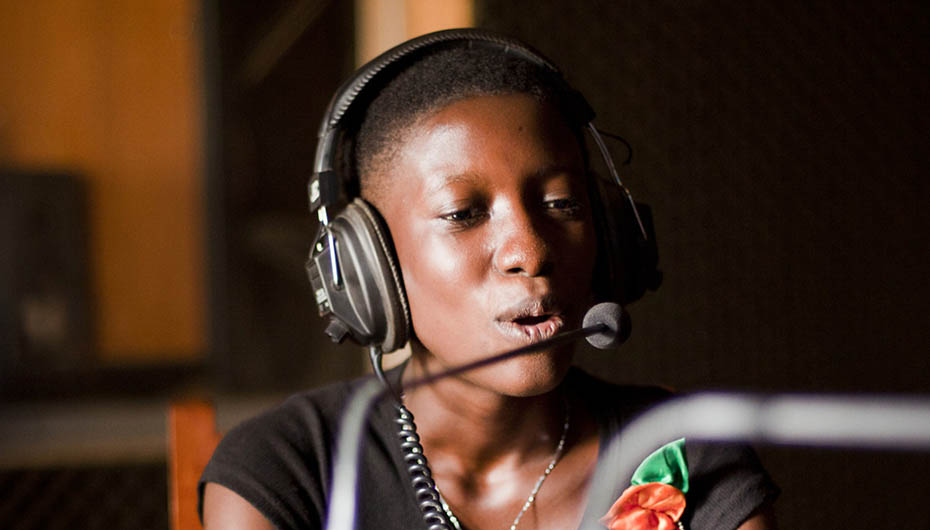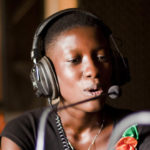Media Centre - Media release - 17 October 2018
Blind spot in Australia’s aid program leaving millions of girls out of secondary education, new report

A blind spot in Australia’s aid program is leaving millions of girls out of secondary education, a new report from child rights organisation Plan International reveals.
It’s Our Time analysed Australia’s aid programs and policies to determine whether it was on track to achieve its commitment to gender equality.
CEO of Plan International Australia, Susanne Legena said adolescent girls – aged 10 to 19 – were denied opportunities due to gender discrimination worldwide.
“Adolescent girls all over the world tell us of their passion to go to school, their desire to stay safe and to give back to their communities and families. Yet all over the world girls are denied these opportunities every day of their lives,” said Ms Legena. “Our analysis has found adolescent girls are being overlooked, with serious consequences, particularly, missing out on finishing their secondary education.”
Secondary education is a vital bridge for girls to go on to gain work and be economically empowered. School has also proven to be critical for girls to minimise their risks of teenage pregnancy, early marriage and financial dependence.
But 76% of adolescent girls around the world are not in school, training or employment*.
Countries where Australia contributes aid have particularly low rates of secondary enrollment, such as Papua New Guinea, where just 18% are enrolled**, and the Solomon Islands, where 27% are enrolled***.
Despite these concerning statistics, only 2% of Australia’s overall education aid spending is currently focused on secondary education****.
Worldwide, girl’s face particular barriers to education due to gender discrimination and disadvantage, such as Brenda, who lives in Bougainville, Papua New Guinea.
“I wanted to finish school but I couldn’t due to financial difficulty… I was always telling myself that I should go back to school. If I had a qualification I could work for a company.”
After completing a training program with Plan International, Brenda, 24, managed to secure a job in hospitality and was promoted to supervisory role in just six months. She’s now saving money to undertake further studies to become a hospitality teacher.
Plan International is calling on the government and opposition to address the existing blind spot and commit to supporting disadvantaged adolescent girls around the world, including:
- Increasing funding to address the barriers that stop the most disadvantaged girls completing secondary education.
- Developing an action plan that provides a roadmap for educating and empowering adolescent girls through Australia’s aid and development.
“More than half the global population of adolescent girls are on Australia’s doorstep, growing up in countries we provide aid to – there is enormous potential for us to help achieve gender equality globally by developing an action plan for adolescent girls,” said Ms Legena.
“We know the Australian public supports aid spending on education.
“If we don’t fix the blind spot for adolescent girls in our aid, they will keep missing out on the opportunity to reach their potential to work, and contribute to their communities and economies.”
* Young and female – a double strike? Gender analysis of school-to-work transition surveys in 32 developing countries, ILO (2016).
** Department of Foreign Affairs and Trade Australia’s International Development Assistance: Official Sector Statistics Summary 2016-17, May 2018.
*** UNESCO Institute for Statistics, Gross enrolment statistics for lower and secondary education – females (2012) as found in World Bank data.
**** Department of Foreign Affairs and Trade Australia’s International Development Assistance: Official Sector Statistics Summary 2016-17, May 2018.
Notes to Editors:
- It’s Our Time analysed Australia’s aid policies and programs, including in the Pacific, South East Asia, South West Asia, Africa and the Middle East, and humanitarian investment plans for Syria and Iraq. It also looked at Australia’s investment in 12 multilateral partners, including UN organisations and the Asian Development Bank.
- Gender equality is a key pillar of Australia’s foreign policy, trade and aid and development agenda, with the Department of Foreign Affairs and Trade (DFAT) approach set out in the Gender Equality and Women’s Empowerment Strategy 2015 (“the Gender Equality Strategy”).
About Plan International
Plan International is an independent development and humanitarian organisation that advances children’s rights and equality for girls.
We believe in the power and potential of every child. But this is often suppressed by poverty, violence, exclusion and discrimination. And it’s girls who are most affected. Working together with children, young people, our supporters and partners, we strive for a just world, tackling the root causes of the challenges facing girls and all vulnerable children.
We support children’s rights from birth until they reach adulthood. And we enable children to prepare for – and respond to – crises and adversity. We drive changes in practice and policy at local, national and global levels using our reach, experience and knowledge.
We have been building powerful partnerships for children for over 75 years, and are now active in more than 70 countries.
Media contacts

